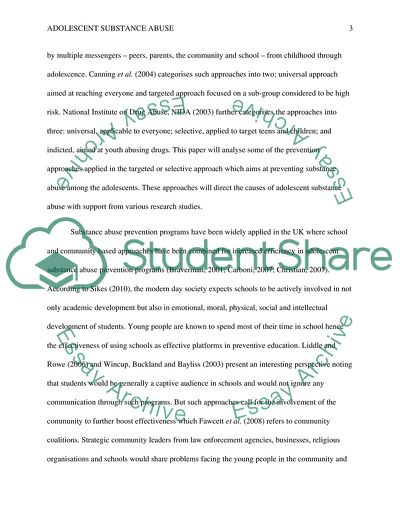Cite this document
(Causes of Adolescent Substance Abuse Prevention Strategies Literature review, n.d.)
Causes of Adolescent Substance Abuse Prevention Strategies Literature review. https://studentshare.org/psychology/1770187-what-strategies-are-likely-to-be-effective-in-preventing-adolescent-substance-abuse-and-what-does-this-tell-us-about-the-causes-of-substance-abuse
Causes of Adolescent Substance Abuse Prevention Strategies Literature review. https://studentshare.org/psychology/1770187-what-strategies-are-likely-to-be-effective-in-preventing-adolescent-substance-abuse-and-what-does-this-tell-us-about-the-causes-of-substance-abuse
(Causes of Adolescent Substance Abuse Prevention Strategies Literature Review)
Causes of Adolescent Substance Abuse Prevention Strategies Literature Review. https://studentshare.org/psychology/1770187-what-strategies-are-likely-to-be-effective-in-preventing-adolescent-substance-abuse-and-what-does-this-tell-us-about-the-causes-of-substance-abuse.
Causes of Adolescent Substance Abuse Prevention Strategies Literature Review. https://studentshare.org/psychology/1770187-what-strategies-are-likely-to-be-effective-in-preventing-adolescent-substance-abuse-and-what-does-this-tell-us-about-the-causes-of-substance-abuse.
“Causes of Adolescent Substance Abuse Prevention Strategies Literature Review”. https://studentshare.org/psychology/1770187-what-strategies-are-likely-to-be-effective-in-preventing-adolescent-substance-abuse-and-what-does-this-tell-us-about-the-causes-of-substance-abuse.


